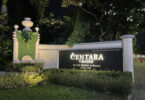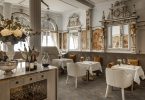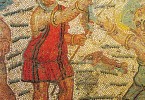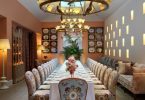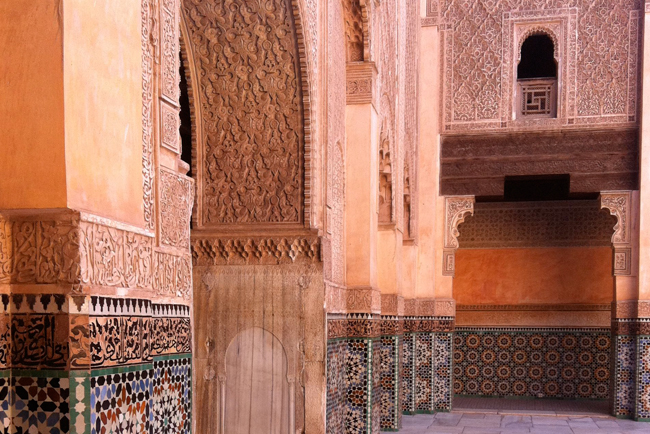
It is impossible to talk about new influences in contemporary design and architecture without mentioning the recent popularity of Moroccan and Middle Eastern style. With the explosion of awareness to this part of the world, more and more people are keen to understand the influences of Moorish magnificence.

On a recent close encounter, viewing the architecture of Morocco brought to light the intensive delicate details, the perfect synergy of culturally iconic shapes, colours and forms, everyday function and a proud national identity.
The distinctive architecture of Morocco is mainly Islamic although it has been heavily influenced by the traditions of those expelled from Spain in the Middle Ages. The horseshoe shaped Islamic arches, calming shades of green and blue, courtyard gardens at the heart of the houses and elaborate decoration are all to be seen throughout Morocco. Other traditional aspects of Moroccan architecture reflect the country’s turbulent past in fortified palaces and desert strongholds.

For the recent influx of tourists, Islamic styling is now a trendy source of inspiration, open for interpretation when reinvigorating their own dwellings back home, and the locals are keen to recreate their old cities and lush interiors into stages of visual wonder.
While entry into a Mosque is forbidden for non-Muslims, there are plenty of examples through the cities, (as well as the possibility of staying in Riad accommodation) where one can experience the sight of such jaw-dropping craftsmanship.
Riad – The Traditional Palace Dwelling

Riads are inward focused, which allowed for family privacy and protection from the weather in Morocco. This inward focus was expressed by interior gardens, courtyards, and inward facing bedroom windows. The lack of large windows on the exterior clay or mud brick walls is quite common. This design principle found support in Islamic notions of privacy, like hijab for women. (Islam promotes modestly rather than a showing of wealth to your fellow comrades).
Entrances to these houses are a transitional experience from meeting at the aged, wooden doors and locks that bind them from any public space to a colourful and enchanting oasis inside. Marble is also used internally as a means of keeping the interior spotlessly clean and also cool. The locals like to joke that while they traded their sugar to the Italians for their marble, the Moroccans still have their marble but the Italians have well and truly used up their supply of Moroccan sugar.
The use of tiles in the lower level of the house also leaves the interior cool and comfortable. Aided by a central water feature like a fountain, this adds a sense of calm and a space for reflection while living amidst the bustle of the Arabian streets. The interior walls of the Riads that are adorned with tadelakt plaster and zellige tiles, include Arabic calligraphy designs quoted from the Quran. Usually, upper levels of Riads have more detailed carvings and wooden details for warmth in the cooler winter months. Often, families would reside completely upstairs in winter or completely downstairs in the summer, and the centre of the internal courtyard would remain open all year round.
The style of these Riads has changed over the years, but the basic form is still used in designs today. Recently there has been a surge in interest in this form of house after a new vogue of renovation in towns such as Marrakech, Fez and Essaouria where many of these often-crumbling buildings have been restored to their former glory and are now used as hotels or restaurants.
Sites to visit in Marrakech:
Koubba El Badiyin, Marrakech

This is the earliest example of Islamic architecture with beautiful carved plasterwork seen nowhere else in Morocco. Although non-Muslims are forbidden to enter the mosque, all visitors are allowed into the Koubba El Badiyin, a small domed structure that sits alone in its own garden. This is the only surviving structure from the Almoravids era, the founders of Marrakech. The underside of the dome carries a beautiful eight-pointed star motif. What makes this structure so interesting and unique is the lack of multicoloured tiles and the reliance purely on shape and carving to creating depth, shadow and aesthetic complexity.
Medersa Ben Youssef

Built in the 16th century as an Islamic school by the Saadians , theMedersa ben Youssef could house up to 900 religious students who were studying the Quran.
The humble student dwellings with their small interior windows are visible upstairs, while the large open courtyard is one of the finest restorations of Islamic architecture in the country. One cannot help but feel the tranquillity of the large water feature on entry, and the incredible design symmetry in the open space allows for contemplation and time for thorough appreciation of the detailed surroundings. Within the decorative elements, a sense of balance between elaborate decoration and humane modesty is so perfectly achieved.
Plenty of contemporary design magazines, books and interior products now bring awareness to, and take inspiration from these structures and housing around the globe. With this in mind, small donations at these sites throughout travels in Morocco are highly appreciated by restoration foundations and the proud Moroccan people.
Text & Images: Madeline Cambel – Connoisseur Magazine

